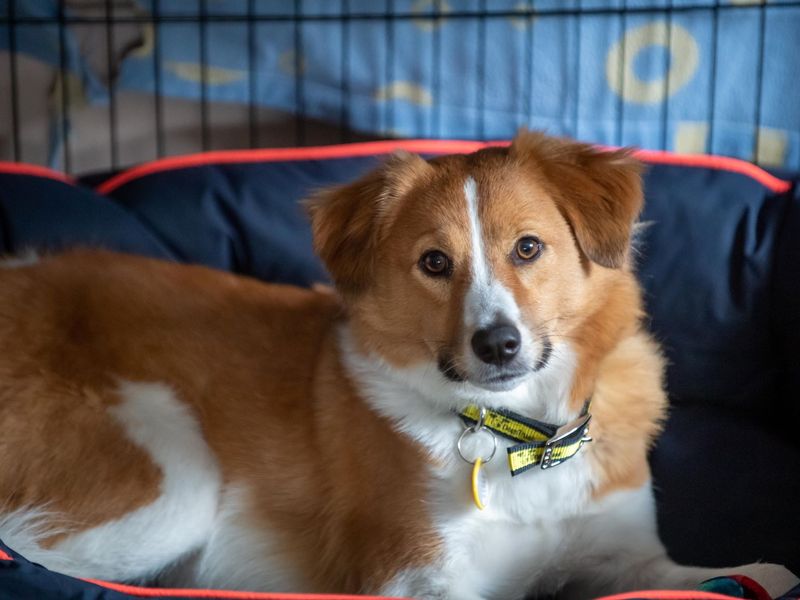Creating a safe space for your dog
All dogs need a safe space of their own. Find out what makes a good safe space.

All dogs need a safe space of their own. Somewhere they can go to relax if they feel anxious or overwhelmed, where they won’t be disturbed.
Safe spaces are especially important when there’s more disruption than usual, like during fireworks or when visitors come round.
Top tip: set your dog’s space up well in advance, so they’re familiar with it being a safe place to go.
How do I make a safe space?
Step 1: Find the right location
First, find the right spot for your dog. If they have a favourite room or area in the house, this could be a good start. If not, somewhere they often spend time or rest.
Your dog’s safe space should be:
- warm, cosy, and free from draughts – the corner of a room or under the stairs could work well
- quiet (ideally), without much foot traffic – although some dogs may prefer to be close to the family
- big enough for your dog to stand and fully stretch out, but not so big that there’s excess space and doesn’t feel snug
- somewhere your dog can enter or exit freely without help
- somewhere with easy access to drinking water
- free from hazards like wires, which should be covered all removed, or small items that could be chewed or swallowed
- theirs and no one else’s - if you have multiple dogs, each pup should have their own safe space.
Step 2: Start to build
There are lots of possibilities for the structure of your dog’s safe space. Try to avoid unstable furniture or setups that could collapse or accidentally trap them inside.
Some ideas for building your dog’s safe space:
- put a comfy bed or blankets to the nook between two armchairs or by the side of the sofa
- place a bed or blankets under a table or desk
- use a crate with the door fixed open or removed.
Step 3: Make the safe space cosy and snug
Many dogs will feel safer if they’re quite snug in a space. Once you’ve added comfortable bedding, consider adding extra blankets to make it a cosy spot to squeeze into.
Blankets over the top of the crate or table can help with soundproofing and give your dog a sense of security. Tailor the space for them - some dogs may feel better fully covered, others may prefer to look out.
Safe space rules to live by
Your dog’s safe space should never be used as punishment.
It should be a place of comfort and calm where they’re always able to relax, free from conflict.
Make sure all family members, especially children, know where your dog’s safe space is.
They need to leave your dog alone when they’re in it. The same goes for visitors, so that your dog can always get away from the hustle and bustle if they need to.
If you need your dog to leave their safe space, avoid dragging them out.
Use your recall word or scatter something they like on the other side of the room so they leave without your help.
Fireworks
Is your dog fearful of fireworks? There are extra steps you can take to support them through those long evenings. Things like adding more covering blankets, closing curtains to block out flashes, and turning on the radio.
You can even try out our Soft Sounds for Dogs playlist.
If your dog shows signs of fearing fireworks, talk to your vet as soon as possible. They can check if there are any medical problems contributing to their fear of noises.
We’re here to help
You can call our free Behaviour Support Line. Our friendly experts provide immediate, non-judgmental advice over the phone and can recommend the best course of action.
Call us on 0303 003 6666
or
Print out our happy place door hanger
Show visitors where you dog’s safe space is with this DIY door hanger. Just print it, colour it in, and stick the sides together. Hang it in their safe space to let visitors know to leave them be.




